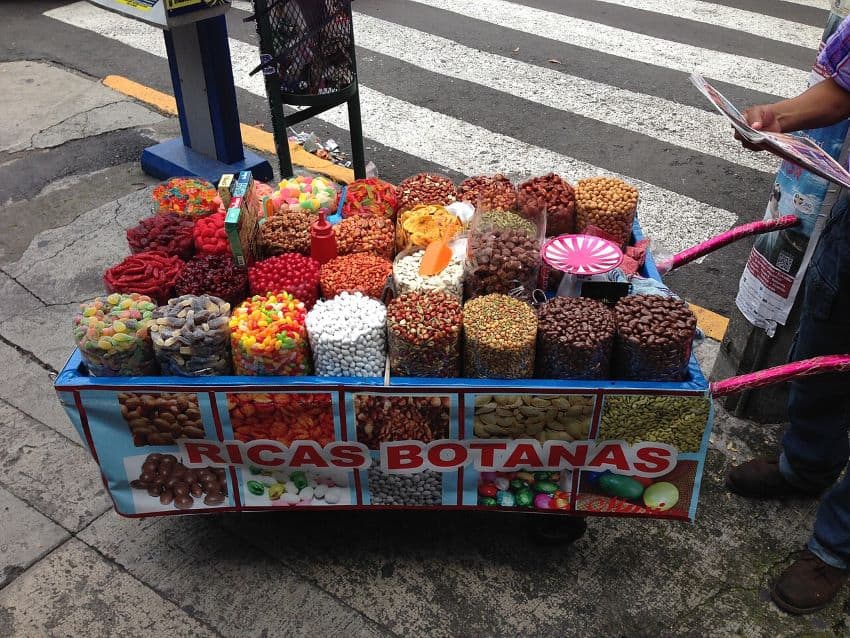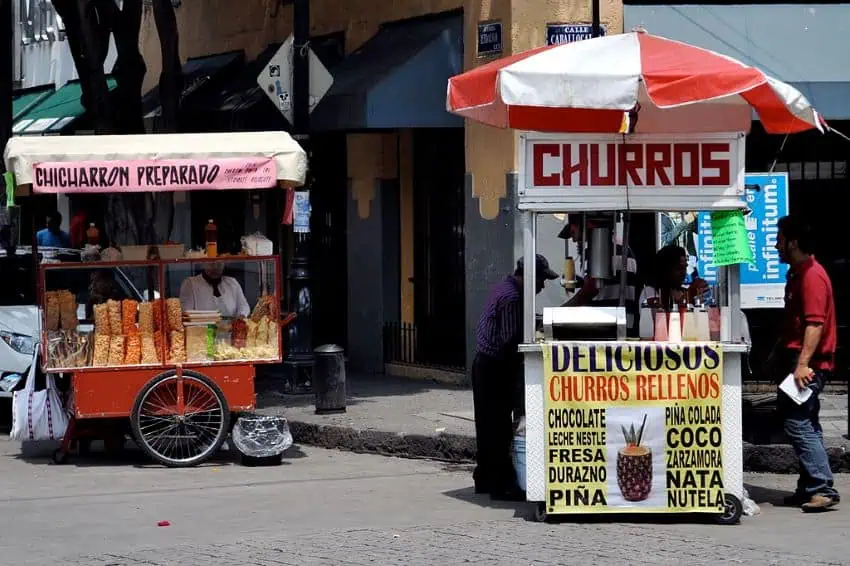Nearly every day, a street vendor sets up his table outside my apartment building in Condesa, one of Mexico City’s more international neighborhoods. His display looks like nothing I have ever encountered during decades of US supermarket shopping: enormous clear plastic bags filled with unpackaged goods, from golden raisins the size of grapes to puffed corn and mysterious crunchy bits that defy easy categorization.
There are nuts I can’t name, dried fruits in colors that seem too vivid to be natural and — somewhat surprisingly — animal crackers, sitting unselfconsciously alongside exotic root vegetable chips and chili-dusted everything. Each time I approach his stall to pick up some dates or a ripe avocado, the vendor hands me a different snack to try.

This is Mexico’s “granel” culture in action, where bulk goods are sold loose from large containers called “botes,” and where the concept of individual packaging seems wasteful and unnecessary. Coming from New York’s hermetically sealed supermarket experience, where even single bananas sometimes come wrapped in plastic, this felt revolutionary. But it also revealed something more profound about the difference between US and Mexican approaches to food, community and the simple act of snacking.
What I was witnessing and tasting were Mexico’s botanas — a universe of snack foods that makes US options look somewhat flavorless by comparison. Botanas, which English speakers would classify as snack foods or finger foods, represent more than between-meal munchies. They are the edible representation of Mexico’s approach to flavor, texture and social eating — one that prioritizes intensity and variety.
A flavorful fusion of history
The roots of Mexican botanas stretch back to pre-Columbian civilizations, where indigenous peoples had already mastered the art of preserving and flavoring seeds, nuts and dried fruits. The Mexica (Aztecs) seasoned pumpkin seeds with salt and chili, while Maya civilizations developed complex spice blends that enhanced corn-based snacks. When Spanish colonizers arrived in the 16th century, they brought new ingredients — cheese, certain nuts, preservation techniques — but rather than replacing Indigenous practices, these influences layered onto existing traditions.
This historical fusion explains the complexity that defines Mexican botanas today. Unlike US snack foods, which have traditionally veered toward single-note flavors like salty, sweet or artificially cheesy, Mexican versions embrace spice and complexity, often with multiple textures that keep the taste buds excited.

The response of my Mexicana friend Lourdes upon asking her what her perception of botanas is, echoes the historical blend of cultures. “You can have papitas, maybe string cheese, peanuts dip and crackers,” the Mexico City native explains, describing a typical botana spread. “Or jamón serrano, croquetas — like mini tapas,” she says, referring to the traditional Spanish options. A veritable mix of two traditions.
Sweet, salty, sour, sabroso
Many botanas begin with the base ingredients that Americans might recognize — corn, potatoes, peanuts — but diverge dramatically in the seasoning phase. Mexican botana producers employ flavor profiles like tangy, chili-based chamoy, the smoky marinade-inspired powder called adobado, and the various chili pepper combinations that make something enchilado. These create layered taste experiences impossible to achieve with simple salt or artificial cheese powder. In many cases, flavors are brought to their extremes, with spice or acidity so intense that — unless your tastebuds are already accustomed — the combinations will bring tears to your eyes.
These can be applied to familiar base ingredients like potato or sweet potato, but Mexican producers also work with more exotic bases like taro root or malanga, or even sweet ingredients.
Contrasting flavors are often applied in combinations that sound questionable but work well in practice. Chili and lime appear together so frequently they seem inseparable, while sweet and spicy combinations like tamarind candy with chili powder create complex flavor experiences that keep consumers’ tastebuds buzzing.
Social snacking
Botanas serve distinct social functions in Mexican culture, appearing in contexts that range from casual to ceremonial. Even during purchase, the act of interacting with a vendor, discussing options, sampling, seeing this person day in and day out, sometimes gossiping, lingering, trying novel products and running into neighbors can turn into a warm, community-based act. The vendor outside my apartment building creates community in ways that self-checkout supermarket aisles cannot, offering samples, sharing information about products and building relationships with regular customers.
Weekend gatherings feature elaborate botana spreads that can include a dozen different items, from simple chili-dusted peanuts to complex cheese-and-meat combinations. These aren’t just accompaniments to the main event; they’re integral to the social experience, providing common ground for conversation and shared experience.

Even solo tasting provides a moment of reflection, awareness, novelty or variety. Choosing from an array of botanas becomes a deliberate act — considering textures, anticipating flavor combinations and experiencing genuine surprise when a new taste exceeds expectations.
Deeper than nibbles
As I write this, the vendor outside my building is setting up his Tuesday display, arranging plastic bags filled with dozens of different snacks I’m still learning to identify. Each week brings new discoveries: a different type of dried fruit, a novel chili blend, a combination I hadn’t previously imagined. It’s a small reminder that in a world increasingly dominated by global brands and standardized experiences, local food cultures continue to offer genuine surprises.
The Mexican botana tradition suggests that snacking doesn’t have to be mindless consumption of bland, over-processed foods. It can be exploration, social bonding and genuine pleasure: “simplemente deli,” as posh Mexicans might say. Simply delicious, and different from what we thought we knew about what a snack could be.
The granel system, in particular, offers lessons that extend beyond food. In an era when consumers increasingly express concern about packaging waste and desire for authentic experiences, Mexico’s snacking tradition provides a working model for how retail might function differently.
Do try them, if you dare.
Monica Belot is a writer, researcher, strategist and adjunct professor at Parsons School of Design in New York City, where she teaches in the Strategic Design & Management Program. Splitting her time between NYC and Mexico City, where she resides with her naughty silver Labrador puppy Atlas, Monica writes about topics spanning everything from the human experience to travel and design research. Follow her varied scribbles on Medium at medium.com/@monicabelot.
